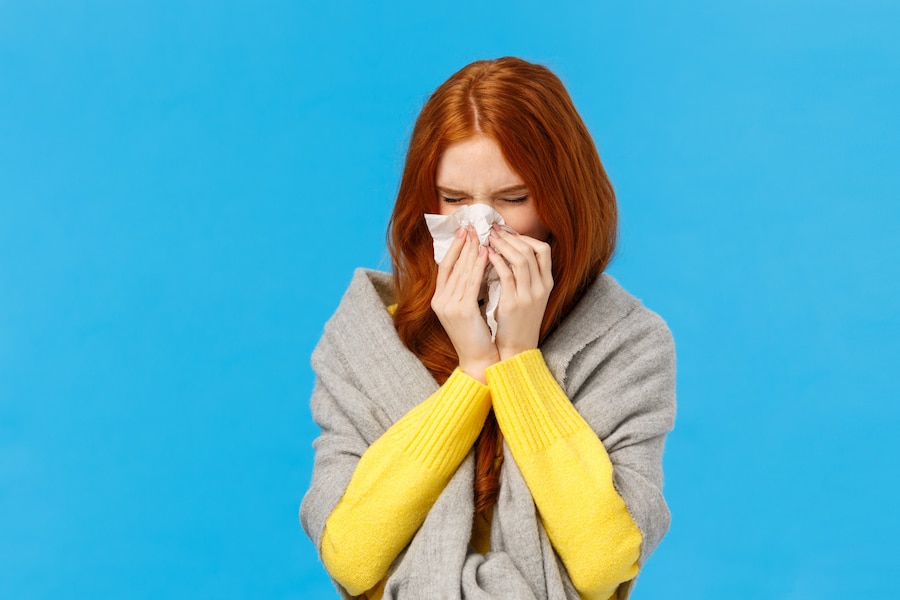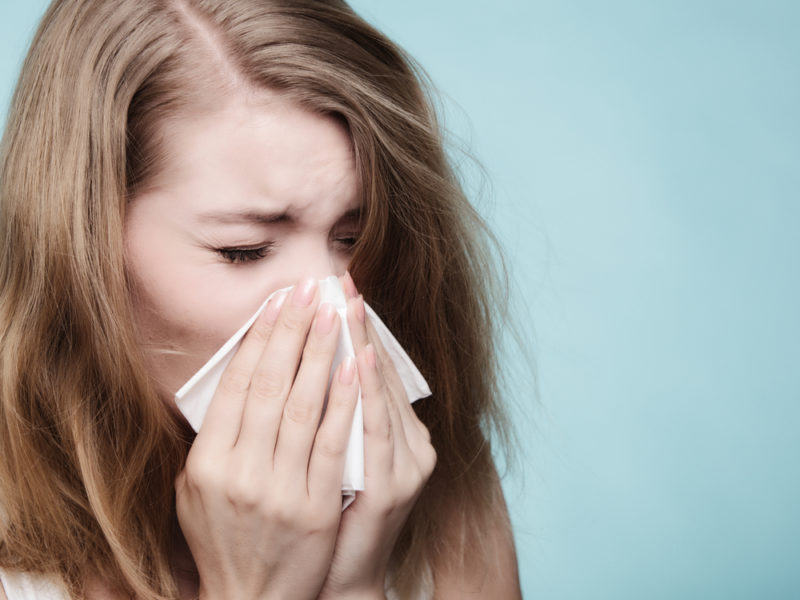The colors of phlegm indicate different health conditions. When you are sick, the production of phlegm in the chest increases. You can see a change in the color of the phlegm.
The body intentionally produces phlegm to remove bacteria or other microorganisms from the upper respiratory tract. In addition, color differences can also occur due to the production of enzymes when fighting infection.
Find out more about the various colors of phlegm as an indicator of health conditions.

Different colors of phlegm as a sign of disease
According to the Cleveland Clinic, phlegm is made of mucous membranes in the chest. It is used and produced by the respiratory system to fight inflammation and infection in the body.
In healthy conditions, the consistency of mucus tends to be runny. However, be careful when the mucus production becomes more and more viscous because it can be a sign of disease.
Likewise, when the color of the sputum changes from the previous clear. Discoloration can signify disease in the lungs or other respiratory systems.
It would help if you were more careful because there are types of phlegm classified as dangerous. Here are the various colors you need to know, such as:
White phlegm

The body produces white phlegm every day. So, the color of white sputum is a normal condition.
White phlegm contains water, protein, antibodies, and some saline solutions to help lubricate and moisturize the respiratory system.
When you experience increased mucus production, white phlegm is a sign that your body is trying to expel irritants, including:
- Allergic rhinitis
This allergy in the nose or hay fever makes the body produce more mucus after exposure to the allergen. You also become coughing and trying to expel white phlegm.
- Bronchitis virus
That is inflammation of the bronchial tubes in the lungs. Initially, you will see the color of clear or white phlegm accompanied by coughing. It would help if you were careful because the later stages of infection can make the phlegm yellow or green.
- Pneumonia virus
An infection of the lungs causes this type of pneumonia. Initial symptoms include fever, dry cough, muscle aches, increased phlegm, and other flu-like symptoms.
Grey phlegm
Grey phlegm is also generally not a sign of a dangerous condition. It indicates sinus activity and nasal congestion. When the airways become inflamed, the phlegm in the respiratory tract thickens and becomes white.

Here are some health conditions that cause the color of phlegm to turn white, such as:
- Viral bronchitis
It is the phase that occurs before bronchitis is exposed to a bacterial infection. Initially, the color of the sputum is Grey before slowly turning yellow and green.
GERD is a digestive system problem that can cause the body to produce Grey phlegm.
- Chronic obstructive pulmonary disease
Chronic obstructive pulmonary disease (COPD) can cause the airways to narrow, causing the lungs to produce excess mucus. It would be best if you were careful because it can make it difficult for the body to get oxygen and Grey phlegm.
- Congestive heart failure
Congestive heart failure occurs when the heart cannot optimally pump blood around the body. As a result, there is a buildup of fluid and edema.
Accumulating fluid in the lungs will cause coughing and produce Grey phlegm.
Yellow or green phlegm
Yellow or green phlegm is the most common. That is, the body is reacting against the infection.

This yellow or green color arises from the white blood cell enzymes. Initially, the color of the sputum is yellowish, which slowly turns greenish. The sputum’s color depends on the infection’s severity and the reaction of the body’s immune system.
Some of the diseases that trigger the production of yellow or green phlegm include:
- Bronchitis
The initial symptom of bronchitis is a dry cough followed by clear or white phlegm. Over time, the phlegm may turn yellow and green due to increased infection. Coughs can last up to 90 days.
- Pneumonia
Pneumonia usually occurs due to complications of breathing problems. This disease can make the color of phlegm yellow, green, to bloody.
Cough, fever, chills, and shortness of breath are common symptoms of all types of pneumonia.
- Sinusitis
Viruses, allergies, or bacteria can cause sinusitis. If the cause is bacteria, the phlegm may be yellow or green.
- Cystic fibrosis
The main characteristic of this rare cystic fibrosis disease is the buildup of phlegm or sticky mucus fluid in the lungs. Sufferers can produce yellow, green, or brown phlegm.
Pink or red phlegm

When the phlegm is reddish, it can ascertain that the trigger is blood. The cause is:
- Chronic cough or too loud
When a person has a chronic cough, the blood vessels can burst, releasing spots or blood along with phlegm. Likewise, when coughing comes out too hard.
- Pneumonia
Pneumonia or a developing lung infection can be a cause of red phlegm. Symptoms include fever, chills, cough, and chest pain.
- Tuberculosis
Tuberculosis is a bacterial infection that is transmitted nearby. The main symptoms include coughing for more than 3 weeks, coughing up phlegm, and night sweats. The possible color of TB disease sputum is reddish.
- Congestive heart failure
Congestive heart failure can also cause the sputum to turn pink or red. It is when the heart does not pump blood effectively to the body.
- Pulmonary embolism
Pulmonary embolism is when the pulmonary arteries in the lungs become blocked. It often results in bloody or bloodstained sputum. This condition is life-threatening and can cause shortness of breath and chest pain.
- Lung cancer
Lung cancer can cause many respiratory symptoms and coughing up phlegm that causes blood.
Brown phlegm

Sputum that is brown looks like rust. Brown phlegm means that there is blood deposition and is classified as dangerous.
Usually, brown phlegm appears after someone previously issued reddish phlegm due to blood. The following are the causes of the appearance of brown phlegm, such as:
- Bacterial pneumonia
Pneumonia caused by bacteria can cause sufferers to produce brownish-green phlegm like rust.
- Bacterial bronchitis
Bacterial bronchitis can also make the body react by producing brownish phlegm. People who are at risk for chronic bronchitis are smokers or who are often exposed to smoke.
- Cystic fibrosis
Not only greenish-yellow phlegm, but people with cystic fibrosis can also produce brown phlegm like rust.
- Pneumoconiosis
Someone who inhales particles such as asbestos, silica dust, and coal dust can also experience pneumoconiosis. The color of the patient’s phlegm is brown.
- Lung abscess
Abscesses in the lungs also make the sufferer produce brown phlegm. In addition, other symptoms are excessive sweating at night to loss of appetite.
Black phlegm
Black phlegm is also known as melanopsin. When a person excretes black phlegm, he has inhaled a black substance such as coal dust for too long.
Fungal infections are also possible, especially in people with compromised immune systems. For that, you need to go to the doctor immediately. Other causes of black phlegm are:
- Smoke
Too much smoking causes a person to produce black phlegm
- Pneumoconiosis
This type of pneumoconiosis can also cause black phlegm. Generally, this occurs in coal workers or those frequently exposed to coal dust.
- Fungal infection
A black fungus called Exophiala dermatitidis can also cause infection. In this rare condition, the sufferer can produce black phlegm.
You can do various ways to deal with annoying phlegm. However, when the phlegm becomes thicker, bulkier, discolored, and sticky, it signals that the infection is getting worse.
In addition, the sufferer may be dehydrated. When the phlegm is getting more and more annoying and even causes difficulty breathing, don’t delay seeing a doctor.




